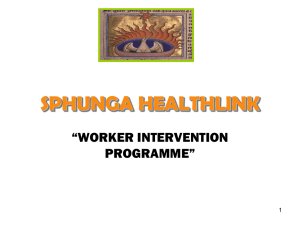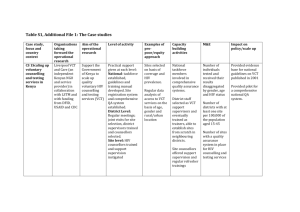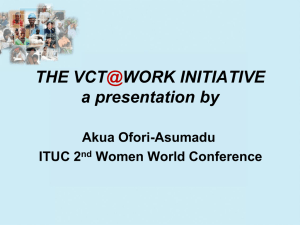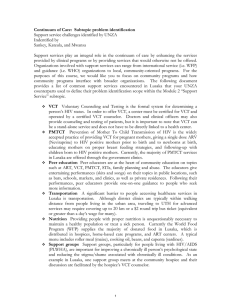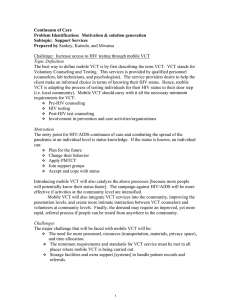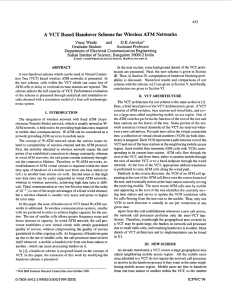i l VCT n Schoo s: ibl
advertisement
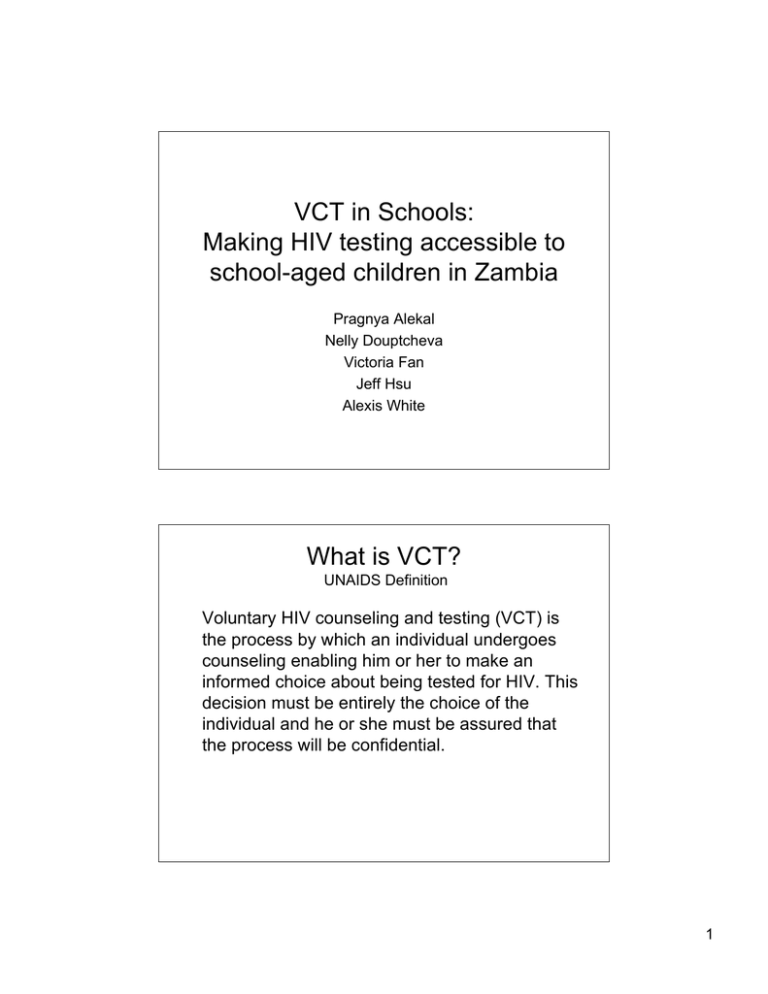
VCT in Schools: Making HIV testing accessible to school-aged children in Zambia Pragnya Alekal Nelly Douptcheva Victoria Fan Jeff Hsu Alexis White What is VCT? UNAIDS Definition Voluntary HIV counseling and testing (VCT) is the process by which an individual undergoes counseling enabling him or her to make an informed choice about being tested for HIV. This decision must be entirely the choice of the individual and he or she must be assured that the process will be confidential. 1 The VCT Process Why target schools? • Sexual activity begins early – Young people aged 15-24 represent nearly half of all new HIV infections worldwide, that’s close to 7,000 new cases each day • Sexual education at home and in the community is limited and information may be outdated • Children younger than 13 years old are a lowrisk population; education and awareness can reduce risk of infection as these children enter higher-risk age groups • Easy access to a large number of young people 2 Why VCT in schools? • Education alone will be insufficient, combining it with child-focused counseling and testing will improve results • Students may not be able to or feel comfortable accessing VCT in the community • Incorporating testing with education will make it a “norm” rather than a stigmatizing event When to introduce VCT to schools? Primary Schools (Ages 5-13) • Pros: – Children still in low risk age groups – School enrollment is at its highest will reach the largest, most receptive audience • Cons: – May face opposition from parents or administrators who feel this service is inappropriate for young children – Testing and counseling low-risk populations may consume limited resources that might be better used on higher-risk populations 3 When to introduce VCT to schools? Secondary Schools (Ages 14-18) • Pros: – Many students are already sexually active and could benefit most from frequent testing and the availability of counseling – Free, easy-to-access, testing (not requiring parental consent) in schools would increase the number of students aware of their HIV status Knowledge of HIV status leads to greatest change in risky behavior • Cons: – May have missed valuable window for preventing the transmission of HIV to students – Norms and stigma may already be cemented in this age group Considerations • Anonymity – confidentiality of test results to ensure that information is managed appropriately and students are not discriminated against based on HIV status • VCT appropriate for children – special counseling and communication needed to address the needs of young clients • Parental consent – necessary until what age? • Informed Consent – how is this guaranteed in populations under 18 years of age? • Community and political partnership in this effort 4 What makes VCT services effective? • Consideration of national policy issues and plans regarding VCT services • Establishment of design, management and partnerships at all levels • Site selection, development, support and maintenance processes • Designing counseling and testing protocols • Addressing counselor training needs • Assuring community support and linkages with other services, including formation of post-test clubs • Promotion and advocacy, including the need for communication materials • Monitoring and evaluation, including quality assurance measures • Providing care and support for counselors 5 MIT OpenCourseWare http://ocw.mit.edu EC.S11 Engineering Capacity in Community-Based Healthcare Fall 2005 For information about citing these materials or our Terms of Use, visit: http://ocw.mit.edu/terms.
